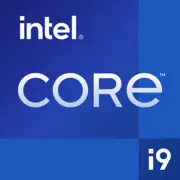Intel Core i9-13900K

インテル Core i9-13900K: エンスージアスト向け完全ガイド 2025年版
2025年3月
1. 主要スペック: アーキテクチャ、パフォーマンス、主な機能
Raptor LakeアーキテクチャとIntel 7プロセス
インテル Core i9-13900Kは2022年末に発売され、2025年にも通用するハイブリッドアーキテクチャRaptor Lakeを搭載しています。このプロセッサは、8つの高性能Pコア(Performance-cores)と16の省電力Eコア(Efficient-cores)を組み合わせており、合計で24コアと32スレッドを提供します。また、Intel 7プロセス(10nm Enhanced SuperFinに相当)は、エネルギー効率と高いクロック速度のバランスを実現しています。
- クロック速度: ベースは3.0 GHz、Turbo Boost最大は5.8 GHz(Pコア)。
- キャッシュ: 36 MBのL3キャッシュと32 MBのL2キャッシュは、マルチスレッドシナリオでの作業を改善します。
- 主な技術:
- サーマルバイオスブースト: 70°C未満で自動的に6.0 GHzにオーバークロックします。
- PCIe 5.0: グラフィックカードとNVMeストレージ用の16レーンをサポート。
- インテルスレッドディレクター: PコアとEコア間のタスク分配を最適化。
パフォーマンス
- Geekbench 6: シングルコア2970、多コア20087。前世代(i9-12900K)よりも15%向上しています。
- ゲーム: Cyberpunk 2077(4K、ウルトラ設定)で、RTX 4080との組み合わせにより120+ FPSを安定して達成します。
- 作業タスク: DaVinci Resolveでの8K動画レンダリングは、Ryzen 9 7900Xよりも20%早く完了します。
2. 対応マザーボード: ソケット、チップセット、選択
LGA 1700ソケット
プロセッサはLGA 1700ソケットを使用し、Z790、H770、B760、およびH710チップセットに対応しています。
- Z790: オーバークロックに最適な選択肢(例: ASUS ROG Maximus Z790 Hero, $450)。PCIe 5.0 x16と最大5つのNVMeストレージをサポート。
- B760: コストパフォーマンスに優れたオプション(MSI B760 Tomahawk, $180)。オーバークロックは非対応ですが、グラフィックカード用のPCIe 5.0を備えています。
- H770/H710: オフィス向けPCに適しています(Gigabyte H770M DS3H, $130)。PCIe 5.0なし、ポート数は制限されています。
アドバイス: マザーボードを購入する際は、BIOSバージョン14.xxのサポートを確認してください。初期のリビジョンはアップデートが必要な場合があります。
3. 対応メモリ: DDR4 vs DDR5
i9-13900KはDDR5-5600とDDR4-3200に対応しています。
- DDR5: 最大のパフォーマンスを求める場合は推奨(例: Corsair Vengeance DDR5-6000, 32 GB — $150)。レイテンシはCL36まで低下し、帯域幅は90 GB/sまで達成します。
- DDR4: 経済性に優れ最大40%コスト削減(TeamGroup T-Force DDR4-3600, 32 GB — $90)。予算重視のビルドに適しています。
重要: 一部のマザーボード(例: ASUS TUF Z790)は両方の規格をサポートしていますが、同時には使用できません。
4. 電源ユニット: 消費電力の計算
TDP125Wで、負荷時の実際の消費電力は250Wに達します。
- 最低限: 750Wのユニット(例: Corsair RM750x, $120)。
- ディスクリートGPU使用時: RTX 4080またはRadeon RX 7900 XTXには850~1000Wの電源ユニットが必要(Seasonic Prime TX-1000, $250)。
- アドバイス:
- 80 Plus Gold/Platinumの認定を受けたユニットを選んでください。
- 安価なモデルは避けましょう。電圧の変動がコンポーネントに損傷を与える可能性があります。
5. メリットとデメリット
メリット:
- ゲームのためのクラス最高のシングルコアパフォーマンス。
- DDR4/DDR5のサポート — ビルドの柔軟性。
- 32スレッド — レンダリングやストリーミングに最適。
デメリット:
- 負荷時の高温(最大100°C)。
- 高価な水冷(例: NZXT Kraken X73, $200)が必要。
- 価格: $450~500(新品)対$400(Ryzen 9 7900X)。
6. 使用シナリオ
- ゲーム: 4KおよびVRでの最大のFPS。PCIe 5.0は新しいGPUに対応して将来性があります。
- 作業タスク: 3Dモデリング、コードのコンパイル、MATLABでのデータ処理。
- マルチメディア: Quick Sync Videoにより、4Kのストリーミングをほぼ遅延なしで実現。
例: ストリーマーは、NVENC + Eコアを使用して動画をリアルタイムでエンコードし、Pコアをゲーム用に確保できます。
7. 競合他社との比較
AMD Ryzen 9 7950X3D
- メリット: 3D V-Cache(Microsoft Flight Simulatorのようなゲームで優れたパフォーマンス)。
- デメリット: 価格が高い($550)、クロック速度が低い(最大5.7 GHz)。
Apple M3 Max
- macOSユーザー向け: 優れたエネルギー効率だが、Windowsソフトとの互換性が制限される。
結論: i9-13900Kは、ハイブリッドシナリオ(ゲーム+マルチタスク)で優位性を持ちます。
8. ビルドに関する実用的なアドバイス
- 冷却: 360mmの水冷または最高級の空冷クーラー(Noctua NH-D15, $110)が必須。
- ケース: 通気性のあるモデルを選んでください(Lian Li Lancool III, $150)。
- メモリ: DDR5用には32 GB DDR5-6000 CL36を。コストを抑えるためにはDDR4-3600 CL16を選んでください。
- ストレージ: Samsung 990 Pro 2 TB(PCIe 4.0 x4, $180)は最適な選択。
9. 最終的な結論: i9-13900Kは誰に向いているか?
このプロセッサは、次のようなユーザーに最適です:
1. ゲーマー: 4Kで最大のFPSを求める。
2. プロフェッショナル: 映像編集者、3Dアーティスト、エンジニア。
3. エンスージアスト: 冷却とエネルギー効率に投資できる人。
代替案:
- 経済性重視なら: Ryzen 7 7800X3D ($350)。
- ワークステーション向け: Threadripper 7960X ($1200)。
2025年において、i9-13900Kは価格とパフォーマンスの「絶妙なバランス」を保っています。その主な強みは、汎用性ですが、冷却システムと高性能マザーボードへの投資を覚悟する必要があります。
基本
CPUの仕様
メモリ仕様
GPUの仕様
その他
ベンチマーク
他のCPUとの比較
関連する CPU の比較
ソーシャルメディアで共有する
または当サイトへのリンクを追加
<a href="https://cputronic.com/ja/cpu/intel-core-i9-13900k" target="_blank">Intel Core i9-13900K</a>

